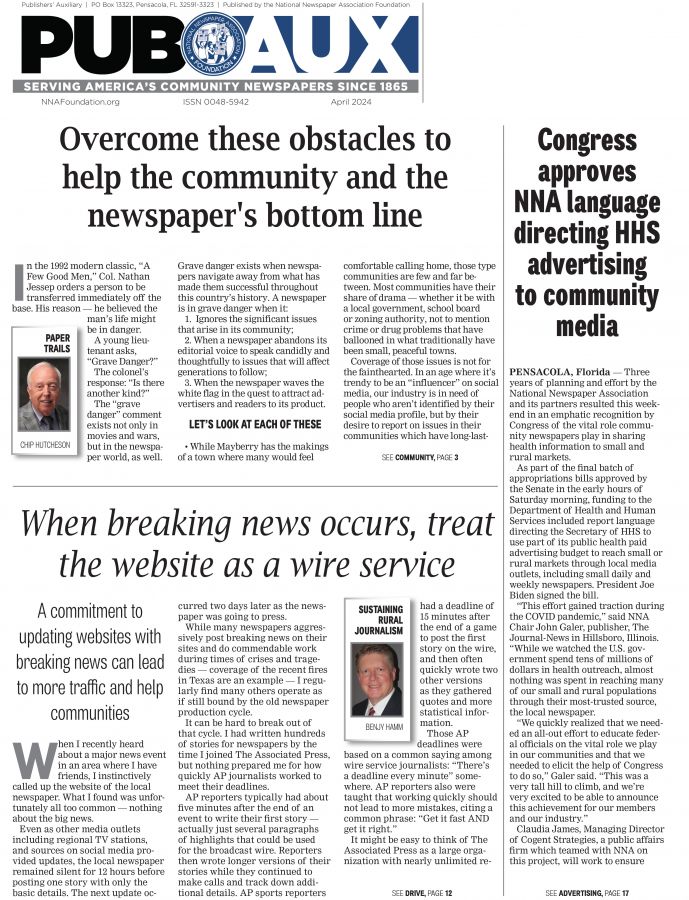The First Amendment, our articles of peace
Dec 22, 2015
By Charles C. Haynes
Inside the First Amendment
In 2015, America's increasingly crowded public square was often filled with hostility, becoming an angry arena where people shout past one another across religious and ideological divides.
Incendiary rhetoric and personal attacks are now commonplace in culture war conflicts over everything from refugees and immigration to religious freedom and sexual identity.
Any notion of the "common good" gets lost in the crossfire of charge and counter-charge — and, on the fringes, wars of words escalate into outbursts of hate and intolerance.
Of course, some degree of incivility is the price of freedom. Free speech in a free society is, by definition, a messy proposition.
Each of us — whatever our religion, belief or political philosophy — is guaranteed under the First Amendment the right to express our faith, values and convictions openly and freely without governmental interference.
The framers of the First Amendment understood that the only thing worse than a loud, sometimes offensive public square — which was often the case in 18th century America — is a public square where the government determines what is offensive and what is not.
At the same time, the framers worried out loud about the dangers to freedom when people exercised rights without responsibility. James Madison, the primary author of the First Amendment, framed the problem this way:
"Is there no virtue among us? If there be not, we are in a wretched situation. No theoretical checks — no form of government can render us secure. To suppose that any form of government will secure liberty or happiness without virtue in the people is a chimerical idea."
In other words, the Constitution is necessary, but not sufficient to ensure freedom. Rights are best protected when citizens debate one another robustly, but civilly — and take responsibility to guard the rights of others, including those with whom they disagree.
The letter of the First Amendment guarantees religious freedom by mandating government neutrality among religions and between religion and non-religion and by protecting the right of every individual to follow the dictates of conscience.
But these guarantees require a critical mass of citizens to uphold the spirit of the First Amendment to counter social discrimination, hostile work environments and other forms of discrimination often experienced by religious minorities in daily life.
In the United States today, "religious minority" could describe people of any faith — from the Mormon in Mississippi to the Baptist in Utah. And let's not overlook the social and political discrimination directed at atheists, humanists and others with no religious affiliation — a rapidly growing segment of the American population.
We are all members of a religious or ideological minority somewhere in America. How we treat "the other" in places where we are in the majority may well determine how we are treated in places where we are in the minority.
Litigation and legislation are sometimes needed to enforce the letter of the First Amendment, but litigation and legislation alone cannot end the social discrimination that chills free speech and limits religious freedom.
Only by agreeing, as a matter of civic duty, to engage one another with civility and respect can we ensure a society committed to upholding the rights protected by the First Amendment.
The principles of rights, responsibility and respect that flow from the First Amendment are not — as Catholic theologian and American public philosopher John Courtney Murray reminded us — our "articles of faith."
We each have religious and non-religious convictions that are often matters of conscience more deeply held than our civic commitments.
But, as Murray also reminded us, First Amendment principles provide our "articles of peace" — the civic framework and ground rules that enable Americans to live and work together as citizens of one nation of many faiths and beliefs.
Can we live with our deepest differences? Resolving in the New Year to reaffirm our articles of peace is a good place to start.
Charles C. Haynes is vice president of the Newseum Institute and founding director of the Religious Freedom Center. E-mail: chaynes@newseum.orgWeb: www.religiousfreedomcenter.org Twitter: @hayneschaynes.







